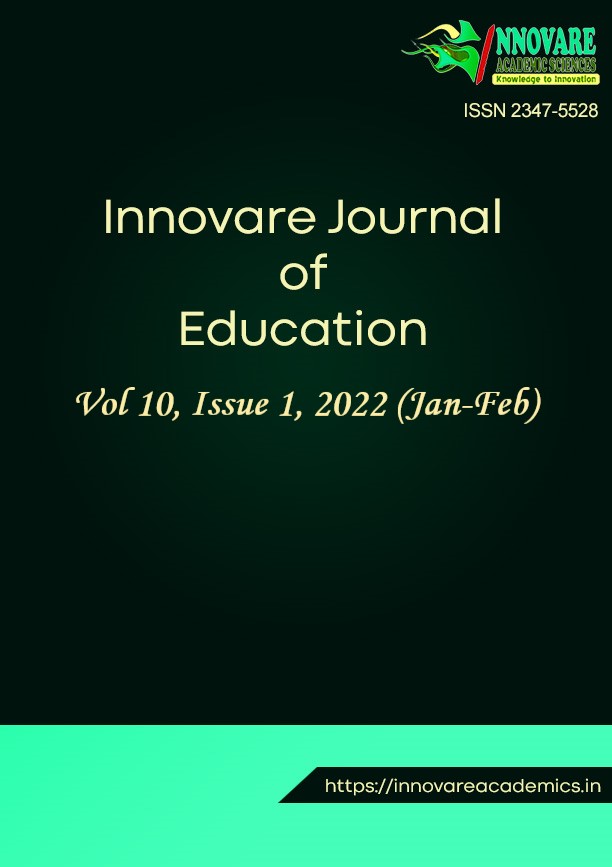Increasing Empathy, Decreasing Prejudice: The Role Of Empathy In Challenging Prejudice Among Students
DOI:
https://doi.org/10.22159/ijoe.2022v10i1.43414Keywords:
anti-prejudice education, anti-racism education, empathy, middle school, positive perspectives, social-emotional learningAbstract
Is empathy a remedy for prejudice? This short paper argues it has a large role to play. It explores the authors’ observations as a Humanities teacher engaging Grade 8 Australian students between the ages of 12 and 14 in a study of the film Rabbit-Proof Fence. As students empathised with Aboriginal (Indigenous Australian) children forcibly removed from their families under Australian government policy in the twentieth century, they questioned the negative things they themselves had come to believe about Indigenous Australians.
Downloads
References
ACARA. (2013). Learning Continuum of Intercultural Understanding. https://www.australiancurriculum.edu.au/media/1075/general-capabilities-intercultural-understanding-learning-continuum.pdf
Christensen, L. (2017). Unlearning the myths that bind us: Critiquing cartoons and society. In W. Au, B. Bigelow & S. Karp (Eds.), Rethinking schools 31(3).
De Waal, F. B. (2008). Putting the altruism back into altruism: The evolution of empathy. Annual Review of Psychology, 59, 279–300. https://doi.org/10.1146/annurev.psych.59.103006.093625
Decety, J., & Jackson, P. L. (2004). The functional architecture of human empathy. Behavioral and Cognitive Neuroscience Reviews, 3(2), 71–100. https://doi.org/10.1177/1534582304267187
Gallaher, G., Ziersch, A., Baum, F., Bentley, M., Palmer, C., Edmondson, W., & Winslow, L. (2009). In our own backyard: Urban health inequities and Aboriginal experiences of neighbourhood life, social capital and racism. Adelaide: Flinders University.
Heaton, A. P. (2020). Combatting racism to create a better Australia: the national cross-curriculum priority of teaching Aboriginal histories and cultures. Australian Aboriginal Studies Journal, AIATSIS, 1, 41-50.
Heaton, A. P. (2019). The Path of Empathy: Students imagining the impact of racism and re-thinking race-related perspectives. International Journal of Education, Humanities & Social Science, 2(3) 33-9.
Hodges, S. D., & Klein, K. J. K. (2001). Regulating the costs of empathy: The price of being human. Journal of Socio-Economics, 30(5), 437–452. Retrieved 4/10/2021. https://doi.org/10.1016/S1053-5357(01)00112-3
Minio-Paluello, I., Lombardo, M. V., Chakrabarti, B., Wheelwright, S., & Baron-Cohen, S. (2009). Response to Smith’s letter to the editor “emotional empathy in autism spectrum conditions: weak, intact, or heightened?” Journal of Autism and Developmental Disorders, 39(12), 1749–1754. Retrieved 4/10/2021. https://doi.org/10.1007/s10803-009-0800-x
Priest, N., Walton, J., White, F., Kowal, E., Baker, A., & Paradies, Y. (2014). Understanding the complexities of ethnic-racial socialisation processes for both minority and majority groups: A 30-year systematic review. International Journal of Intercultural Relations, 43(B), 139–155.
Reconciliation Australia. (2018). Let’s Bust Some Myths.
Rogers, K., Dziobek, I., Hassenstab, J., Wolf, O. T., & Convit, A. (2007). Who cares? Revisiting empathy in Asperger syndrome. Journal of Autism and Developmental Disorders, 37(4), 709–715. Retrieved 4/10/2021. https://doi.org/10.1007/s10803-006-0197-8
York, S. (2016). Roots and Wings; Affirming culture in Early Childhood Programs. Redleaf Press.
Published
How to Cite
Issue
Section
Copyright (c) 2021 ADAM P HEATON

This work is licensed under a Creative Commons Attribution 4.0 International License.





